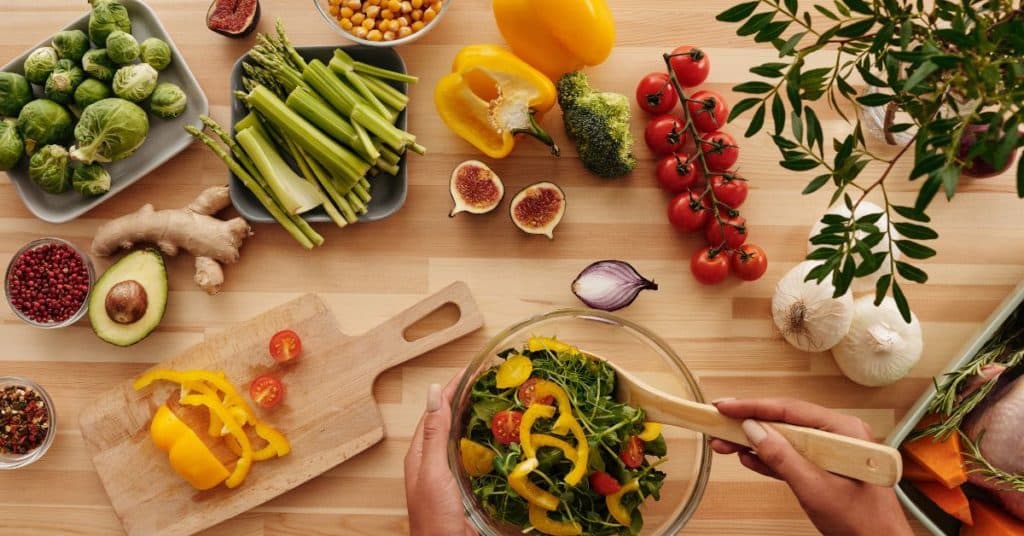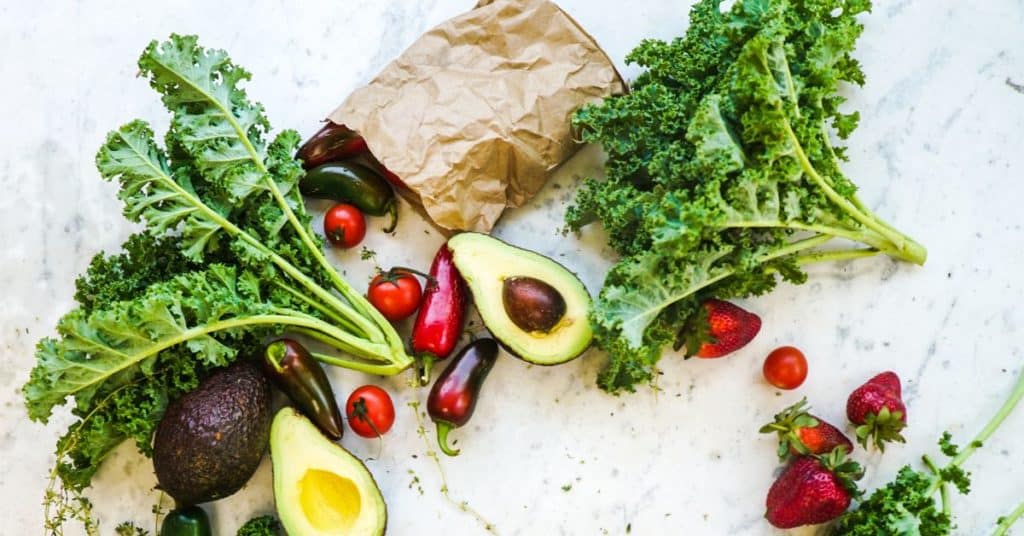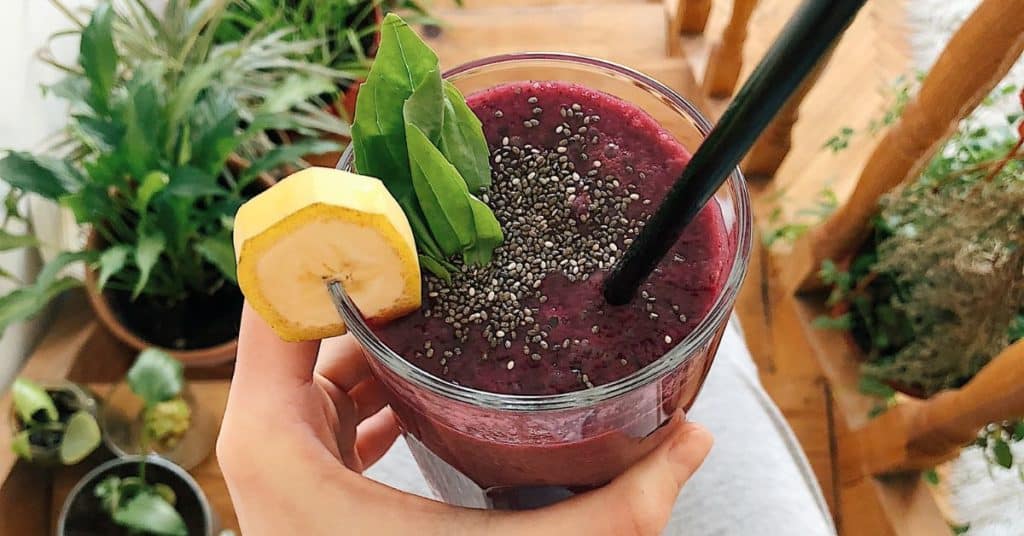“Eating the rainbow” sounds like a fun thing to do… But we’re not talking about Skittles here. Once you start to take stock of the colors on your plate each day, this task might become difficult and may even feel like a chore. The CDC guidelines for fruit and vegetable consumption recommends, “adults eat at least 1½ to 2 cups per day of fruit and 2 to 3 cups per day of vegetables as part of a healthy eating pattern”, which equates to about 9 servings per day. Why is this? What are the benefits of consuming that many fruits and vegetables?

Benefits of Vegetables
- Naturally low in calories. A diet lower in calories, sodium and sugar will help your waistline and most likely set you up for a healthier diet.
- Antioxidants. Vegetables such as broccoli, spinach, sweet potatoes and kale, and fruit such as berries, figs and peaches, are high in antioxidants, which help your body fight against free radicals and prevent cell damage.
- Fiber. Many fruits and vegetables are high in fiber, a necessary component for your body’s digestion system. Most Americans often suffer from low fiber intake.
- Vitamins and Nutrients. Fruits and vegetables are known for high amounts of vitamins and nutrients, such as Vitamin A, Vitamin C, folate, iron and potassium.
- Protection against diseases. A diet that includes high amounts of fruits and vegetables has been shown to decrease risk of heart disease and certain types of cancers.

What is a serving of fruits and vegetables?
MyPlate.gov suggests one serving of fruit is equivalent to 1 cup of fruit, ½ cup of dried fruit, or 1 cup of 100% fruit juice. Likewise, one serving of vegetables is equivalent to 1 cup of raw or cooked vegetables or vegetable juice or 2 cups of raw leafy salad greens.
How can you increase your fruit and vegetable servings to increase the benefits?
A study was released in 2017 from the US Department of Health and Human Services, stating that only 1 in every 10 Americans is actually meeting the fruit and vegetable intake guidelines. As we all know, getting a proper amount of fruits and vegetables into your diet is hard! So here’s a helpful way to start increasing your consumption:
- If you’re eating 0, aim to eat 1 serving of fruit and 1 serving of vegetable each day for one week.
- If you’re eating 2, aim to eat 1 serving of fruit and 2 servings of vegetable each day for one week.
- If you’re eating 4, aim to eat 2 servings fruit and 4 servings of vegetable each day for one week.
A variety of colorful fruit and vegetables is the rainbow your body needs to be healthy. The goal is to consume a 2:1 ratio of vegetables to fruit each day. Continue to challenge yourself to increase fruit and vegetable intake until you reach optimal nutrition of 9 total servings of fruit and vegetables per day.

Some quick tips on adding more vegetables into your diet:
Do you struggle to eat vegetables? Is it the taste, the texture or the amount? Everyone has food preferences. You may prefer raw produce, cooked fruits and vegetables or mixing produce in soups or smoothies. Find your preference and embrace it. This will help you meet your daily goals.
For myself, I like to start my day with a smoothie or soup. This way I can load up on vegetables in the morning. It helps with digestion and gives me a boost of vitamins and minerals. It might be placebo effect but I feel more energized and productive on soup and smoothie days. I can expect around 3 servings of vegetables from a smoothie or soup. If you’re interested in some of my favorite smoothie recipes, you might want to check out my article on How to Make a Smoothie Healthy.
Next, the foundation of all my snacks is vegetables. My favorite is a radish. Soooo good! If you like a little heat, you will enjoy these root vegetables. I find raw vegetables are easy to consume during the day. You could also try carrots and hummus, celery sticks and peanut butter, or cucumber slices with tzatziki. I aim to get 2 snacks in my day, providing me with 2 servings.
Finally, my lunch and dinner are comprised of 50% vegetables, meaning half of my plate is filled with color! This provides my body with at least 4 servings of vegetables. To reach this goal, you could start adding salads or soups as a precursor to your main meal or roast, saute, or airfry a side of veg, like Brussels sprouts, green beans, asparagus, potato wedges, etc.
Voila! I’ve met my goal and my body thanks me.

Final Words on the Benefits of Fruits and Vegetables
My odds are pretty good to bet you aren’t consuming enough fruits and vegetables daily. But if you’ve made it this far, you must be invested in increasing your intake, adding more into your meals, and gaining from the major benefits of fruits and vegetables. Good luck eating the rainbow!

